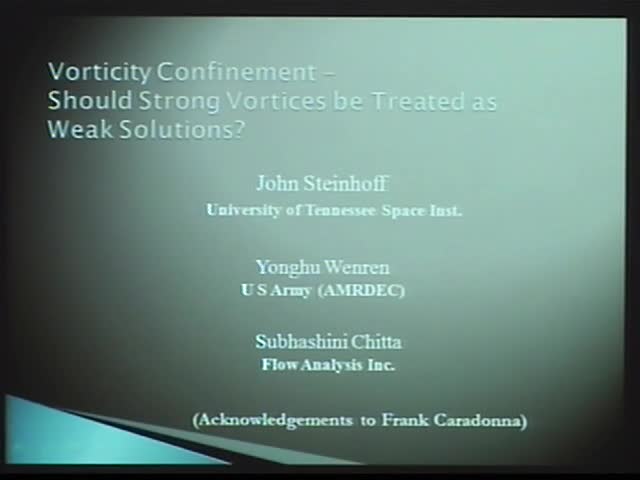Simulating Flows with Strong Vortices
Presenter
March 9, 2011
Keywords:
- Solitary waves, vortices, weak solutions
Abstract
There are many cases where strong vortices shed by parts of a moving body impinge on or come close to other parts of the body that are downwind. These include diverse bodies ranging from aircraft, to race cars to golf balls.
Traditional computation fluid dynamic (CFD) methods solve discretized versions of the governing partial differential equations. In these methods much effort is applied in reducing the local numerical discretization error, such as use of high order discretization schemes or dense computational grids. For thin features, such as shed vortices that propagate over long distances in high Reynolds number flows, this is usually not feasible. Current computers are still not capable of accurately solving the flow equations in these cases.
A relatively new method that is efficient and practical for these problems and that largely overcomes the deficiencies of conventional methods—Vorticity Confinement (VC) —will be described. VC is designed to efficiently capture and convect the important features of flows with thin vortical features without spreading due to numerical diffusion. Effectively, the vortices are treated as multi-dimensional nonlinear discrete solitary waves that “live” on the computational lattice. The basic idea behind VC is similar to shock capturing, where the feature is treated as a weak solution; However, this feature has a structure, which is captured over 2-3 cells on a computational grid with a well defined internal structure, which conserves important quantities such as vorticity and momentum.
Since attached boundary layers are typically also thin vortical regions, Vorticity Confinement can also be used as an implicit no-slip boundary layer model. This implicit boundary layer model thus allows complex bodies to be treated in a simple manner by immersing them in a coarse uniform, Cartesian grid.
Computed shed vortices will be shown for a number of cases, including aircraft, as well as results from blunt body computations ranging from motorcycles to rotorcraft.
